Haunted Places in Montana
Montana has its share of places where things reportedly go bump in the night. Many of these are public spaces, haunted destinations steeped in history with spirited pasts. Havre, Helena, Nevada City, Butte, and Kalispell—each have special places whose compelling stories and unearthly inhabitants beckon the modern ghost hunter.
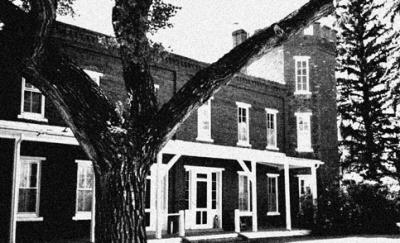
Empty buildings with hollow windows sprawl across the windswept prairie off U.S. 87 outside Havre. Fort Assinniboine, established in 1879, once housed some 800 soldiers and their families. As the largest fort in Montana, its famous residents included General “Black Jack” Pershing. Stationed at the fort in the mid-1890s, “Black Jack” earned his nickname as first lieutenant in the African-American 10th Cavalry unit. The fort closed in 1911 and over the decades the remaining structures served as a state agricultural experiment station, church retreat, farmer’s gathering place, shelter for the homeless, and a 4-H camp.
Former Hill County legislator Toni Hagener tells of an experience an elderly acquaintance once shared with her. He attended camp at the fort in the 1930s. He recalled bunking in the old enlisted men’s barracks. Upstairs, forbidden territory, the fort’s records and ledgers lined the walls, leaving a narrow path down the center of the long room. This pathway offered the boys an irresistible sport. At every opportunity they snuck upstairs, took an open volume, got a running start, and flopped down for an exhilarating slide on the wooden floor.
One night the boy awoke to an odd rustling overhead. Sneaking upstairs to investigate, he saw an old man sitting cross legged on the floor; his long grizzled hair hid his face. A quartermaster’s report lay open in his lap as he slowly turned the pages. The boy slipped back downstairs, woke his buddy, and together they climbed the stairs. Both saw the old man, turning pages. They returned to their bunks to watch the stairway. No one came down. At first light, the boys checked upstairs. The old man was gone.
The memory stayed fresh as the boy grew up. Fire left the barracks a burned-out shell in 1954, prompting the man to further speculate on the oldtimer’s identity. He concluded it was the ghost of an old soldier, searching for something. He could picture him in his mind’s eye, sifting through the ashes as nature gradually reclaimed the ruins.
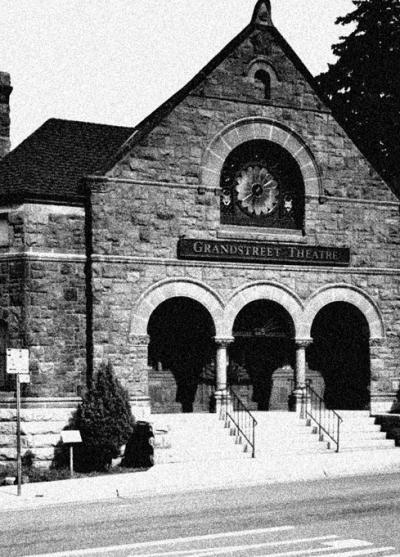
The capital city of Helena, born of the gold rush in 1864, is a jewel where evidence of gold-generated wealth is obvious along its city streets. Grandstreet Theatre is one of Helena’s architectural gems and renowned for its stellar productions. But Grandstreet is also famous for ghostly occurrences and has been included in Haunted Places: The National Dictionary.
The stunning Romanesque style stone structure began in 1901 as the Unitarian Church. Unitarians believed churches should serve the community, so the building doubled as a public auditorium and theatre. Reverend Stanton Hodgin and his wife Clara arrived as a team in 1903. Clara Bicknell Hodgin was a former kindergarten teacher, full of energy and eager to work with children. Fiercely devoted to her small charges, the children adored Clara and she loved to direct them in dramatic presentations. The Sunday school grew from 20 to 100 children in a matter of months. But Clara’s time was short. She became ill and died in January 1905; she was only 34. Her husband found boxes of notes detailing things she had wanted to do, and her students remembered that Clara’s smile was like sunshine.
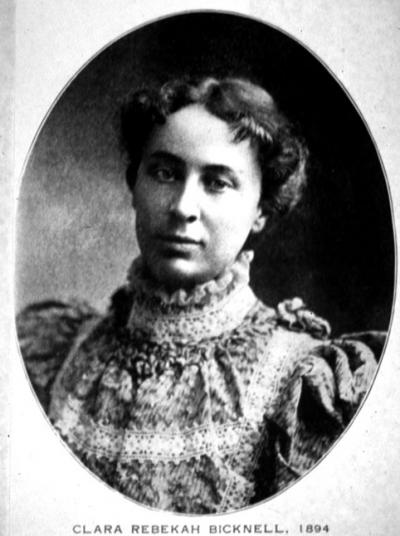
The church became the public library in the 1930s. Then in 1976, its adaptive reuse as Grandstreet Theatre brought the building back to one of its original functions. Grandstreet has earned a top-notch reputation for its highly professional productions and its creative theatre school where young thespians gain hands-on training and experience.
Students, actors, and patrons of all ages report an electric energy in the building. Lights and equipment turn on without assistance. A misty apparition occasionally hovers in the balcony. And the light plays oddly around Clara’s memorial Tiffany window. The dedicatory portion sometimes appears as if someone smudged the words. Is this Clara’s handiwork? Certainly her essence, or “sunshine”—in the form of youngsters’ vibrant enthusiasm for the theatre—lingers. Some believe that Clara herself never strays far.
Montana legislator Charles Bovey’s efforts in restoring Virginia City in the 1940s later spilled over into nearby Nevada City. There he placed some 80 endangered structures from across Montana. Now under state ownership, Nevada City is a good place for ghost hunting. The diverse pasts of its buildings raise myriad possibilities. Employees, for example, sometimes find the bedding rumpled in the Sedman House, and a tourist once commented that the little girl in Victorian dress in the front yard was a nice touch. But there was no little girl.
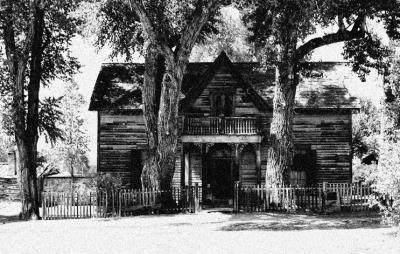
The Nevada City Hotel is another place where spirits wander. The 1860s front portion was a stage stop, its log walls disassembled and rebuilt where the original Nevada City Hotel once stood. A two-story employees’ dormitory, circa 1912, from the Canyon Hotel at Yellowstone Park form the hotel rooms.
Guests have related odd incidents, but the most dramatic event happened in February 2001. A Global Stage production crew filmed a scene of Henry Ibsen’s Enemy of the People in the Nevada City Hotel’s saloon. The temperature dipped below zero in the unheated hotel. The guest rooms and corridors, upstairs and down, were locked. Fifty cast, crew and local “extras” crowded into the bar. State employee John Ellingsen remembers it well: “The director called ‘quiet on the set’ and the camera began to roll. Everyone held their breath, afraid to make a sound. Suddenly there were footsteps in the room above. ‘Cut! Who’s up there?’ yelled the director. The crew members and I rushed upstairs. When I unlocked Room 7, the room over the bar, it was dark, cold, and empty. But the floor kept creaking, slowly and deliberately, during the entire filming. It was even captured on tape.”
Copper veins fueled the city of Butte, where copper kings amassed wealth as thousands toiled in the treacherous underground. Mining left a spectral legacy. Among Butte’s many haunted places is the Butte-Silver Bow County Courthouse. After hours, the elevator goes up and down, its buttons pushed by ghostly fingers, delivering an unseen passenger.
Workers report footsteps echoing through the lofty halls, books falling off shelves, and a shadowy figure wandering through the empty spaces. He turns abruptly and walks through the walls.
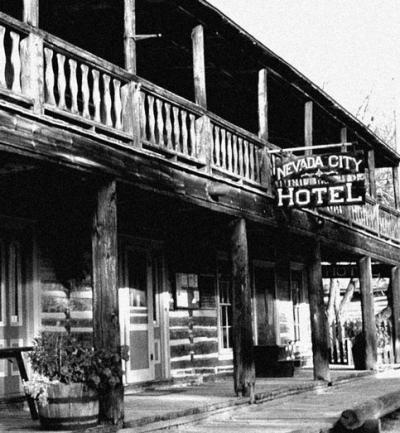
Silver Bow County government has occupied the site since Montana became a state, and it has seen multiple executions. Between 1889 and 1926, 10 men faced the hangman in the jail yard. One of these was Miles Fuller, convicted in 1906 of the gruesome murder of Henry Gallahan. Fuller, an elderly and feeble old prospector, never admitted guilt. A bizarre thunderclap ominously punctuated his swift execution.
After the present building replaced the first courthouse in 1910, deputies in the jail’s sleeping quarters claimed to see Fuller’s ghost. Others reported a shadowy figure in the locked yard. Although Fuller was unknown to them, witnesses described him perfectly, down to his long beard and tattered hat.
Fuller, or whoever he is, roams the courthouse corridors in a curious pattern. Based on many eyewitnesses’ accounts, Mark Reavis, Butte’s historic preservation officer, is convinced that the spectral visitor follows the floor plan of the former building.
Kalispell’s 26-room, Norman-style Conrad Mansion, built in 1895 for Charles Conrad and his family, is a museum worth the trip. Conrad amassed a fortune freighting out of Fort Benton before the railroad made steamboats and ox teams obsolete. He died in 1902, but his daughter Alicia remained in the home and gave it, along with its contents, to the City of Kalispell in 1974. The house, however, needed much work. In the 1980s, Arvid “Kris” Kristoffersen did all the meticulous restoration painting at the mansion and vividly recalls two eerie experiences.
Late one afternoon, Kris was alone in a second-floor bedroom when he heard footsteps in the quiet house. “You can tell whether footsteps are male or female,” he says. “These were female.” He heard someone coming down the hallway and looked up to see a figure pass by. It was a slightly heavyset woman in a white, ankle-length dress and black boots with elaborate laces. Kris went to the doorway and watched the figure disappear down the stairs. After the woman was out of sight, he heard her footsteps fade into the kitchen. Later, museum staff discovered the same white dress in a closet.
A few days after the first incident, Kris and his partner were working downstairs in the music room doorway, alone in the house. It was very quiet. A noise at the top of the stairs caught their attention. Looking up, they both could see the rocking chair in its usual place at the head of the stairs. But in the still of this quiet afternoon, it was moving back and forth, back and forth. The two men gathered their paint brushes and called it a day. In retrospect, Kris feels sure that on both occasions, Mrs. Conrad paid them a visit to say she found the work satisfactory.
Unearthly visitors like these who step out of the past—searching, protecting, wandering, or approving—enrich and add dimension to Montana’s story. Such spirits have reasons to go about their tasks, bound by the history of the places where they go a-haunting.
Sidebar:
To arrange a tour of Fort Assinniboine, call (406) 265-4383 or (406) 265-4000.
To attend a production at Grandstreet Theatre, log onto ttp://www.grandstreet.net/nowshowing.htm or call (406) 447-1574.
The Nevada City Hotel welcomes guests during the summer season. Visit http://aldergulchaccommodations.com/stay or call (800) 829-2969.
Stop in at the Butte-Silver Bow County Courthouse during business hours, Monday through Friday.
For tour information about the Conrad Mansion, visit http://www.conradmansion.com/ or call (406) 755-2166.
~ Ellen Baumler is well known across the state for weaving Montana’s past around things that go bump in the night. Read more history with a ghostly twist in her two books on the subject, Spirit Tailings and Beyond Spirit Tailings: Montana’s Mysteries, Ghosts, and Haunted Places, winner of a 2006 Award of Merit from the American Association for State and Local History.


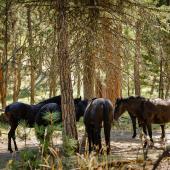


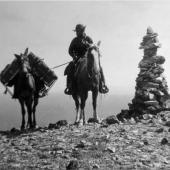
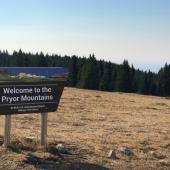


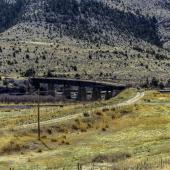


Leave a Comment Here